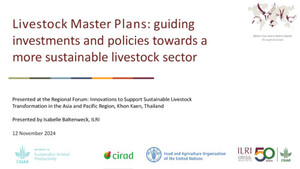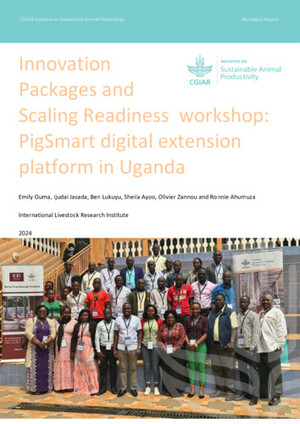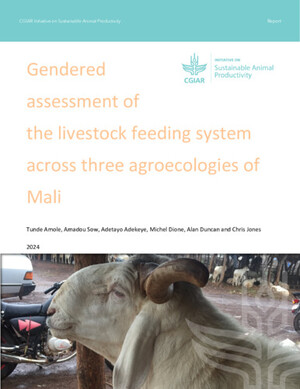
Variations in root and foliage yields and quality among green mite-resistant cassava clones
Abstract
The objective of this study was to determine variations in root and foliage yields, crude protein (CP), and dry matter (DM) degradation characteristics of foliage among 25 cassava clones selected for green mite resistance at Ibadan, south-western Nigeria. Clones were sampled 12 months after planting during the 1994-95 and 1995-96 growing seasons to determine root and foliage yields. Foliage samples were analysed for CP and degradation characteristics of DM in rumen-fistulated N'dama (Bos indicus) steers using the nylon bag method. Root yield ranged from 1.26 t DM ha-1 in clone 92/0397 to 7.67 t DM ha-1 in clone 91/02322, and foliage yield from 0.18 t DM ha-1 in clone 91/02316 to 2.21 t DM ha-1 in clone 92/0429. Crude protein varied from 248 g kg-1 DM in clone 92/0397 to 303 g kg-1 DM in clone 92/0067. Variations in the soluble (142-325 g kg-1), effective degradability (474-575 g kg-1), and rate of degradation (0.0173-0565 percent h-1) among clones were significant. Root yield was poorly correlated with foliage yield, CP and effective degradability of foliage quality. Using root and foliage yields and effective degradability of DM as indices for root and oliage production, some clones (91/00438, 91/002322, 92/0057, 92/0398, and 92/0427) appeared to have higher potential than others, (89/00250, 91/02312, 91/02319, and 92/0397). The result indicate that both agronomic and nutritive value indices of the root and foliage should be considered as selection criteria in furture cassava improvement programmes in developing countries.
Citation
Tropical Agriculture;75(1): 72-76










